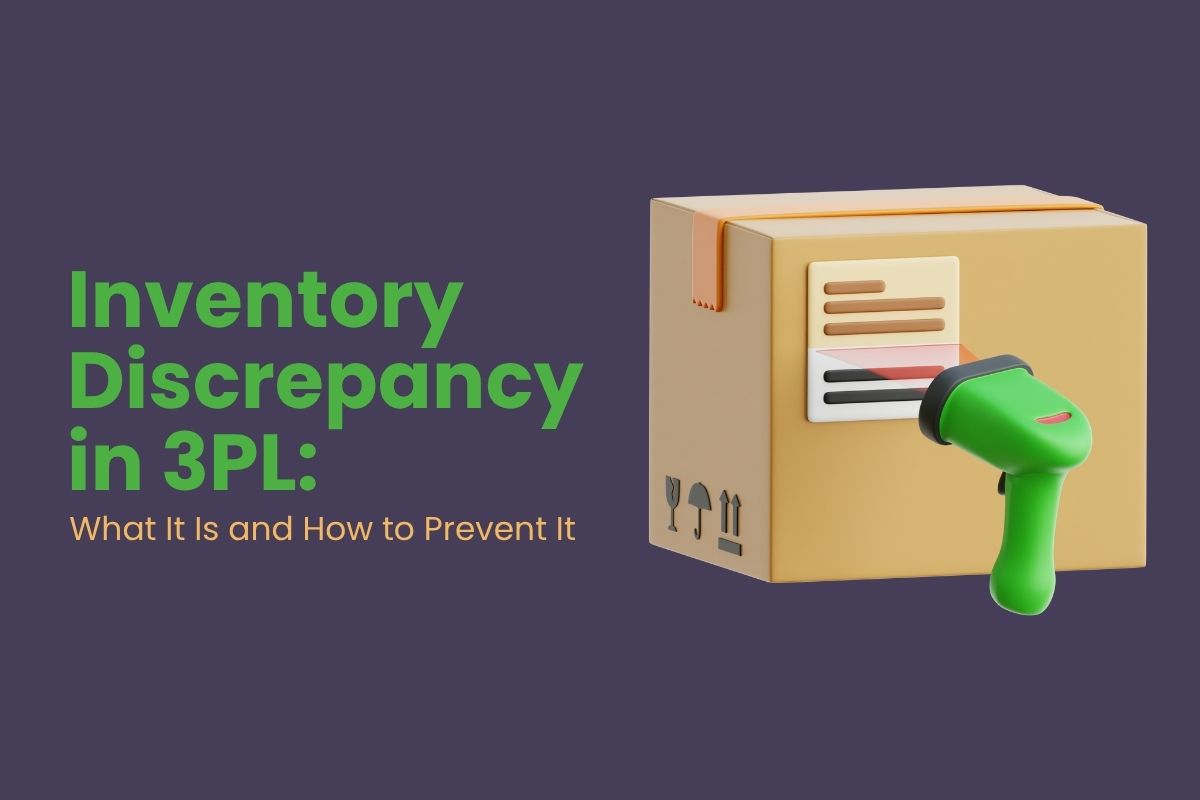Optimising warehouse receiving builds a smarter, more agile supply chain.
A good warehouse receiving process starts the flow of inventory accuracy, smooth workflows, and happy customers.
I rely on solid inventory systems to track stock and log received goods. Managing inventory well cuts errors and boosts efficiency.
Receiving is the first and most crucial step in warehouse operations. Yet, many overlook it. While outbound tasks like picking and shipping get attention, inbound receiving sets everything in motion.
If I let delays, miscounts, or mislabeling happen at warehouse receiving, stock accuracy suffers. Fulfilment slows down, and costs rise fast. Problems can spiral quickly if I don’t control this stage.
At Mercurius IT, I help businesses improve warehouse operations using Microsoft Dynamics 365 Business Central and warehouse management software. A strong receiving process strengthens the entire operation from the ground up.
Unlock smoother supply chains by mastering your warehouse receiving process today.
Introduction to Warehouse Operations
Warehouse operations form the backbone of the supply chain. I know an efficient warehouse receiving process keeps stock counts accurate and operations running smoothly.
Ensuring that receiving inventory matches the purchase order is crucial to avoid costly mistakes. It covers receiving, inspecting, and storing incoming goods. This first step impacts the whole warehouse flow.
A smart receiving process boosts customer satisfaction, cuts inventory imbalances, and raises warehouse efficiency. Understanding these operations helps me focus on what matters most.
Gain control and clarity in your warehouse by refining your receiving process.
Introduction to Warehouse Receiving
Warehouse receiving is a critical component of the entire supply chain, playing a vital role in ensuring that goods are properly accepted, inspected, and stored in a warehouse or fulfillment center.
The warehouse receiving process involves a series of steps, including pre-receiving tasks, receiving and unloading, inspection and verification, documentation and recording, putaway and storage, and inventory update and integration.
An efficient warehouse receiving process is essential for maintaining accurate stock counts, preventing inventory imbalances, and ensuring operational efficiency.
Pre-receiving tasks, such as scheduling deliveries and preparing the receiving area, set the stage for smooth operations.
When shipments arrive, they are unloaded and inspected to verify that the received inventory matches the purchase orders. Proper documentation and recording of received goods are crucial for tracking inventory and identifying any discrepancies.
Once verified, goods are put away in designated storage locations, and inventory systems are updated to reflect the new stock levels.
This entire process ensures that the warehouse operates efficiently and that inventory is accurately tracked from the moment it enters the facility.
Gain control and clarity in your warehouse by refining your receiving process.
Why Warehouse Receiving Matters More Than You Think
Receiving marks the handover of goods into the warehouse. Effectively managing incoming shipments starts with purchasing inventory, then verifying deliveries and storage. I ensure received inventory matches purchase orders to avoid costly mistakes.
If I skip control here, every later step gets harder and more expensive. Most errors in receiving cause problems in picking, stock checks, and order fulfilment. These errors lead to wrong inventory counts, missed shipments, and unhappy customers.
Strengthen your supply chain’s foundation by perfecting your receiving phase.
Your Supply Chain’s Weak Link? Inbound Logistics
Upgrade warehouse receiving and unlock full operational efficiency.
Understanding the Warehouse Receiving Process
The receiving process covers accepting, inspecting, and storing goods.
A warehouse receiving process checklist is essential for improving warehouse operations by boosting efficiency, reducing errors, and ensuring a systematic approach.
It begins when shipments arrive and ends when items reach their storage spots. I focus on proper documentation, precise counting, and efficient storage.
Tracking inventory levels and spotting issues early helps me reduce errors. Following best practices in receiving makes the warehouse smoother and more reliable.
Take charge of your warehouse flow by mastering the receiving process.
Common Challenges in Warehouse Receiving
-
Lack of Accurate Data on Received Items Many warehouses still use paper or outdated spreadsheets. Without accurate advance shipping notices, planning falls apart. This leads to errors in receiving and downstream processes. Dead stocks clutter space and waste resources.
-
Manual Data Entry Slows Everything Typing data by hand invites mistakes and slows down stock updates. This confuses other teams and delays workflows.
-
Dock Congestion from Poor Scheduling Multiple deliveries arriving together without planning cause dock jams. This leads to delays and rushed inspections.
-
Unreliable Supplier Practices When suppliers don’t follow consistent packaging or labeling, my staff spend extra time sorting out deliveries.
Overcome these hurdles to create a seamless receiving experience.
Implementing a Warehouse Management System
A warehouse management system (WMS) controls warehouse tasks, including receiving.
Warehouse management systems are essential solutions for businesses managing warehouse processes, enhancing efficiency through real-time data access and integration with other fulfillment tools. I use a WMS to boost accuracy and speed. It gives real-time views of inventory and operations.
WMS automates data entry and tracks stock automatically. It alerts me to issues as they arise. This cuts errors and raises customer satisfaction.
Harness technology to bring precision and speed to your warehouse receiving.
Tactics to Streamline Warehouse Receiving
-
Invest in Integrated Technology Connecting your WMS with tools like Microsoft Dynamics 365 lets your team scan barcodes and update inventory instantly. This cuts errors and saves time.
-
Set Clear Procedures Standard operating procedures keep warehouse staff coordinated. Documenting pre-receiving tasks ensures deliveries and paperwork are correct. This consistency reduces mistakes and eases training. Emphasize the importance of a structured process warehouse to manage receiving, inspecting, and storing goods efficiently. Provide tips to optimize this process to reduce overwhelm and improve accuracy.
-
Adapt Operations with Supplier Collaboration Request advance shipping notices and clear packaging standards. Supplier scorecards help track performance and build accountability.
-
Manage Dock Appointments Dock scheduling software spaces out deliveries. This prevents bottlenecks, improves safety, and keeps staff working steadily.
-
Use Data to Improve Track processing times, errors, and bottlenecks. Use this insight to refine your process continuously.
Empower your team with clear processes and smart tools for smooth receiving.
Effective Inventory Storage
Good inventory storage supports accurate stock counts and operational efficiency. I design storage systems to minimize handling and make navigation easy. Options include shelving, racking, and bins.
Choosing the right system depends on your goods’ type and volume. Proper storage reduces inventory imbalances and improves customer satisfaction.
Maximize your warehouse efficiency by optimizing how you store inventory.
Documentation and Inventory Counting
Accurate documentation, inventory inspection, and counting are vital in receiving. I ensure goods are logged correctly and stock levels updated. This record-keeping helps spot discrepancies quickly.
An efficient counting system is both precise and fast. It catches issues early, reducing errors and improving satisfaction.
Keep your inventory reliable with thorough documentation and counting.
Supply Chain Considerations
The warehouse receiving process is a critical link in the supply chain, connecting suppliers, manufacturers, and customers.
Effective supply chain management involves coordinating and integrating all activities involved in producing and delivering a product or service, from sourcing raw materials to delivering finished goods to customers.
A well-designed warehouse receiving process can help to improve supply chain efficiency, reduce costs, and enhance customer satisfaction.
By considering the entire supply chain, businesses can identify opportunities to optimize their warehouse receiving process and improve overall performance.
This includes implementing inventory management systems to streamline documentation and improve communication between warehouse staff and suppliers.
By ensuring that the receiving process is efficient and accurate, businesses can prevent inventory imbalances, reduce the risk of lost inventory, and maintain high levels of customer satisfaction.
Effective supply chain management also involves regular reviews and updates to processes, ensuring that the warehouse can adapt to changing demands and continue to operate smoothly.
Strengthen your supply chain’s foundation by perfecting your receiving phase.
Delivery and Shipping
The delivery and shipping process is a critical component of the warehouse receiving process, involving the transportation of goods from suppliers to the warehouse and from the warehouse to customers.
Effective delivery and shipping processes involve ensuring that goods are properly packaged, labeled, and loaded onto delivery vehicles, as well as tracking shipments and managing delivery schedules.
By optimizing the delivery and shipping process, businesses can reduce transportation costs, improve delivery times, and enhance customer satisfaction.
Implementing a warehouse management system can help streamline these processes by providing real-time visibility into inventory levels and shipment statuses.
Conducting regular inventory audits ensures that stock levels are accurate and that any discrepancies are quickly identified and resolved.
Improving communication between warehouse staff and suppliers is also crucial for ensuring that deliveries are timely and accurate.
Technology such as barcode scanners and RFID systems can be used to track goods and ensure accuracy throughout the delivery and shipping process.
Empower your team with clear processes and smart tools for smooth receiving.
Benefits of an Optimized Receiving Process
A well-run, optimized warehouse receiving process makes the warehouse more responsive. It ensures deliveries and inventory are accurate. Documentation accuracy drives the whole receiving flow.
Products become available faster. Stock counts improve. Customer orders ship on time with fewer mistakes.
Optimized receiving cuts redundant work and errors. It frees your team to focus on higher-value tasks and scales with your growth.
At Mercurius IT, I tailor Microsoft business solutions to fit your warehouse needs. I take time to understand your operation and recommend changes that deliver real results.
Transform your warehouse into a well-oiled machine by refining your receiving process.
Ready to Streamline Your Inbound Operations?
If receiving slows you down, start improving today. When you want to improve warehouse receiving process, gain better visibility, faster processing, and accurate inventory, I can help.
I’m not just a software vendor. I’m your partner, guiding your transition to smarter, scalable warehouse operations.
Discover how improved receiving can unlock your warehouse’s full potential.
Talk to us: Contact Us – Mercurius IT








